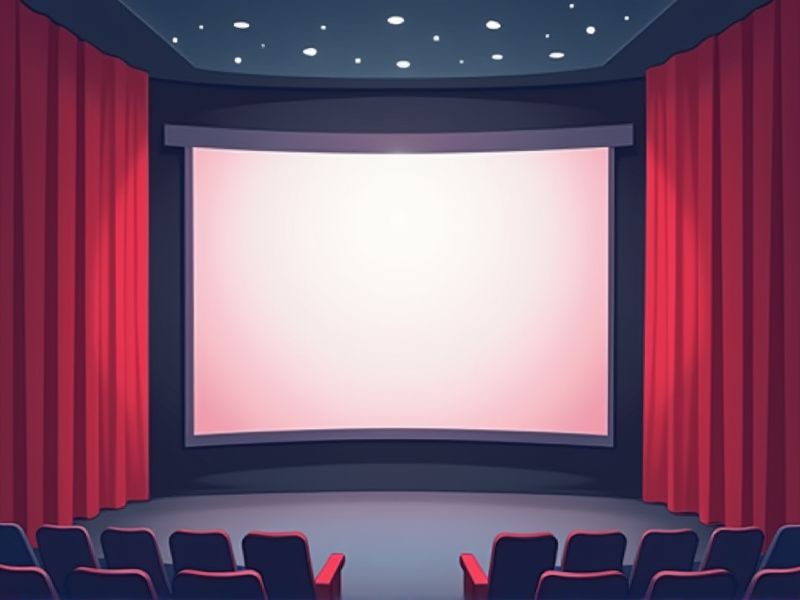
The standard dimensions of a theater screen can vary depending on the type of venue, but most commercial cinema screens follow established aspect ratios like 1.85:1 (widescreen) or 2.39:1 (CinemaScope). For example, in a typical multiplex, a standard theater may feature a screen approximately 45 to 65 feet wide and 20 to 30 feet tall. However, IMAX theaters have even larger screens, sometimes reaching up to 72 by 53 feet or more. When planning or designing a theater space, considering these standard dimensions helps ensure optimal viewing angles and an immersive experience for the audience.
Aspect Ratio
The standard aspect ratio for theater screens is typically 2.39:1, commonly referred to as CinemaScope or anamorphic. This measurement ensures an immersive viewing experience that enhances the cinematic quality of films, allowing a wide field of vision that captivates audiences. In contrast, standard television screens usually maintain an aspect ratio of 16:9, suitable for home viewing but less expansive than the cinematic format. Understanding these ratios can help you appreciate the visual storytelling techniques employed in different media.
Screen Width
The standard measurement for theater screen width typically ranges from 45 to 65 feet, depending on the cinema's layout and seating arrangements. A wider screen can enhance the viewing experience by providing a more immersive visual field, allowing for greater detail and clearer images. For optimal viewing, the recommended seating distance is about 1.5 to 2.5 times the width of the screen, ensuring that you can fully appreciate the film without straining your eyes. Many cinemas now utilize high-definition projection technologies to complement their wide screens, significantly improving picture clarity and color accuracy.
Screen Height
The standard for theater screen height is typically 1/3 of the viewing distance, ensuring optimal visual clarity and comfort for the audience. For example, in a theater with a viewing distance of 30 feet, a screen height of 10 feet is ideal. This ratio enhances immersion and ensures that viewers can easily take in the entire screen without straining their necks. By adhering to these measurements, you can significantly improve the cinematic experience for all attendees.
Viewing Distance
The ideal viewing distance for a theater screen is typically 1.5 to 2.5 times the height of the screen, ensuring optimal visual comfort and immersion. For example, if a screen measures 20 feet in height, your best seating range would be between 30 and 50 feet away. This distance allows you to enjoy the full clarity of high-resolution images while minimizing strain on your eyes. In modern theaters, the aspect ratio and screen resolution are also tailored to enhance your experience at these recommended distances.
Screen Format
When evaluating theater screen formats, consider the common sizes: the standard cinema screen measures approximately 45 to 65 feet wide, accommodating various aspect ratios like 1.85:1 and 2.39:1. High-definition formats such as IMAX take it further, featuring screens that can exceed 70 feet in width, providing a more immersive viewing experience. Your choice in screen format can significantly impact visual clarity and audience engagement, especially with enhanced digital projection technologies now boasting resolutions of 4K and 8K. Moreover, the choice of screen material, whether matte or reflective, also influences brightness and contrast, crucial for an optimal viewing experience.
Resolution
The standard resolution for theater screens typically ranges from 2K (2048 x 1080 pixels) to 4K (4096 x 2160 pixels), providing enhanced image clarity and detail. High dynamic range (HDR) technology further elevates the visual experience, allowing for brighter highlights and deeper blacks. The aspect ratio commonly used in theaters is 16:9 or 21:9, optimizing the immersive experience for cinema-goers. Ensuring your theater equipment can support these resolutions and ratios is crucial for delivering a superior viewing experience.
Screen Material
The screen material in a theater typically involves high-quality components such as Microperf or high-gain surfaces, enhancing both clarity and brightness levels. Screens made of gain materials can boost brightness between 1.0 to 2.5, effectively amplifying the projected image's vibrancy. The choice of screen material can significantly impact the viewing experience, with some materials designed specifically to reduce ambient light interference, ensuring accurate color representation. For optimal results, your theater should incorporate screens that adhere to industry standards such as ISO 21218, which guarantees superior performance in projection quality.
Acoustic Transparency
Acoustic transparency in theater screens is vital for delivering an immersive audio experience, allowing sound to pass through without distortion or loss of quality. High-quality screens often feature materials with a mesh-like structure, enabling clearer acoustics while maintaining image integrity; for example, a well-designed acoustic screen can facilitate sound absorption of up to 95%. This technology is particularly crucial in larger venues, where the distance between the speaker and the audience can significantly affect sound clarity. For optimal performance, consider a screen gain of around 1.0 to ensure balanced sound distribution across the entire viewing area.
Masking Systems
Masking systems in theater screens play a crucial role in optimizing the viewing experience, often featuring adjustable curtains or panels that enhance image presentation. Typically, these systems accommodate various aspect ratios, such as 1.85:1 and 2.39:1, ensuring that films are showcased without distortion or loss of visual information. High-quality masking allows for precise alignment with the projector's output, minimizing light spillage and maintaining contrast. Invest in advanced masking solutions to elevate your theater's performance and viewer satisfaction, as they directly influence the overall aesthetic appeal and clarity of the projection.
Projection Technology
The standard for theater screen focus primarily relies on advanced projection technology, utilizing high-resolution digital projectors that deliver crisp, vibrant images. Modern theaters often employ 4K resolution systems, ensuring four times the detail of 1080p, which enhances the visual experience for audiences. The integration of laser projection offers improved brightness and color accuracy, resulting in deeper blacks and richer hues. For optimal viewing, screens are typically positioned at a height of 1.5 to 2 times the screen diagonal, creating an immersive environment that captivates your attention.
